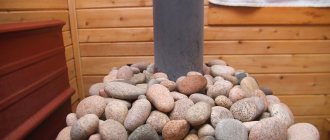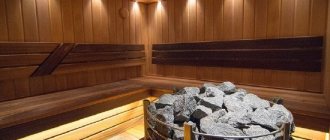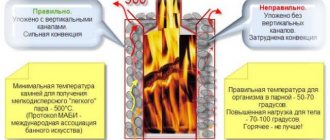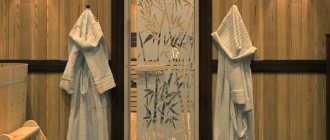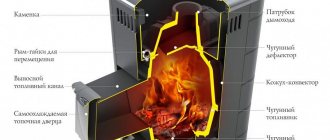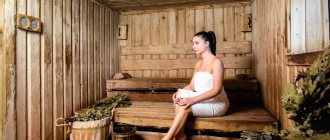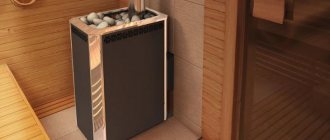Choosing a mineral for the heater
What type of stone should be used for a heater? Primary requirements:
- resistance to high temperatures and frequent temperature changes;
- thermal conductivity;
- heat capacity;
- homogeneous structure;
- environmental Safety.
The stones must accumulate the maximum amount of heat and slowly and evenly release this heat into the surrounding space. The homogeneous structure of the mineral will ensure safety: if water gets in, such a stone will not explode. The chemical composition of the mineral must ensure that no harmful gases are released when heated.
For heaters, it is recommended to choose minerals of magnetic origin that have a uniform structure. Minerals of sedimentary origin are not suitable for a heater, as they cannot withstand high temperatures, delaminate and even explode. In addition to stone of natural origin, you can use artificial materials - cast iron and porcelain.
Elite stones for baths: jadeite, jade, white quartz
Polished jadeite
- Jade is as strong as steel. Has a beneficial effect on the nervous system, metabolism and skin. Good for relieving general fatigue. However, it is not so easy to find in stores, and it is very expensive.
- White quartz is not very durable, but it looks more than impressive, and also has a therapeutic effect. Another name for it is “bath stone”. Despite the high cost, it is popular among those who like to take a steam bath. When cooled, it releases ozone, which rejuvenates and cleanses the skin.
Advice. To save money, you can put cheaper stones on the bottom of the stove, and make the top layer of jadeite or white quartz.
The most commonly used minerals for the heater
To lay the heater, you can use purchased stone and mineral found on the shore of a reservoir or in the forest. Stones with a pronounced litho-therapeutic effect on the human body are of particular value.
Gabbro-diabase
This is the most commonly used stone and can be found everywhere. Gabbro-diabase is distinguished by its heat capacity, strength and low price. Negative characteristics include an unpleasant odor when heated strongly, and the formation of soot when essential oils come into contact with it. The durability of the masonry is 2 years. The stone does not have litho-therapeutic properties, but it retains heat well.
Gabbro-diabase is an inexpensive, dark gray mineral.
Basalt
The mineral of volcanic origin is characterized by maximum heat resistance and resistance to temperature changes; it will not crack when exposed to water. Durable at a low price. It is believed that the stone has a beneficial effect on the skin, helps with insomnia and colds, and relieves stress. The durability of basalt masonry is three and a half years.
Basalt gives off heat for a long time and evenly
Dunit
Another mineral with high heat capacity and resistance to temperature changes, it is durable - installation can last up to 6 years. The second name of the stone is peridotite. The color of the mineral varies from olive to dark gray and black. In Rus' it was the most popular stone for baths. Helps with colds, good for the cardiovascular and nervous system.
Dunite is an inexpensive stone with excellent characteristics
Porphyrite
The stone is characterized by strength, high heat capacity, and low price. The duration of use of masonry in a heater is 5 years. Steaming with this stone is good for the respiratory system, relieves headaches, and helps with migraines.
Porphyrite can help with migraines
Wax jasper
Bright ornamental stone with a uniform structure has long been valued by wealthy people. The stone is durable, with high heat capacity; unfortunately, the service life of the masonry is only 2 years. The popularity of the stone is due to its litho-therapeutic qualities: it helps with diseases of the nervous system, relieves insomnia and nervousness, is useful for heart diseases, and accelerates the healing of wounds.
Wax jasper is an ornamental stone of rich red color, it is valued for its litho-therapeutic effect
White quartz
The translucent white stone is popular due to its ability to ionize the air when heated; lovers of steam baths call it “hot ice.” Unfortunately, its other characteristics do not correspond to the high price: it is short-lived (only 3 years of service) and unstable - it cracks when heated.
Spectacular appearance and ozone release when heated are the main qualities of white quartz
Raspberry quartzite
This spectacular stone is distinguished by its strength, high heat capacity, low water absorption, and the durability of the masonry for four and a half years. The stone is more expensive than basalt, but significantly lower than the price of ornamental stones - jasper, jade or jadeite. It is believed that the mineral has a beneficial effect on the body in diseases of the musculoskeletal system and respiratory system.
Beautiful color, low cost and excellent characteristics make crimson quartzite popular
Soapstone chlorite
One of the most popular minerals for heaters is durable, has high heat capacity, and is resistant to temperature changes. Stone from different deposits has different colors: from light gray to dark red. Due to its strength and heat capacity, it is often used for lining stoves and fireplaces. The price of soapstone depends on the color of the stone; brown and dark red specimens are most valued. Durability in the heater is average, three and a half years. Recommended for strengthening the immune system, normalizing blood pressure and metabolism, in the treatment of inflammatory and colds. Produces particularly light steam.
Thanks to its particularly light steam, soapstone is one of the popular options for laying in a heater.
Chromite
We love this inconspicuous black stone in the Urals: it is found everywhere there. Like all black stones, it has powerful energy and is useful for colds and inflammation. Characteristics: strength, durability up to 5 years, high heat capacity, resistance to temperature changes.
Chromite is a stone with powerful energy, often used in the Urals
Rodingitis
An inexpensive mineral, its characteristics and price are close to chromite. It is believed that a steam bath with it strengthens the immune system.
An inexpensive option, the peculiarity of rodingitis is that it strengthens the immune system
Nephritis
This semi-precious stone is ideal in all respects, has the greatest durability - 10 years, but is popular not because of its beautiful appearance, but because of its litho-therapeutic effect: it has a beneficial effect on the skin, metabolism, and normalizes sweating. Relieves insomnia, relieves stress and fatigue. We especially love it in China. The only negative characteristic is the high price.
Jade is considered an ideal stone for a bath, despite its high price
Jade
Another semi-precious stone, only slightly inferior to jade in durability (5 years) and cost. Litho-therapeutic effect - stabilization of pressure, disinfection of the body, improvement of the functioning of the endocrine, genitourinary, respiratory and circulatory systems. In imperial China, court baths were lined with jadeite. Expensive choice.
The semi-precious stone jadeite is distinguished by its high price and powerful litho-therapeutic effect on the human body.
Himalayan salt
Himalayan pink salt has excellent healing effects and a beautiful appearance. When heated, it releases negatively charged ions. It is durable, resistant to high temperatures and has a high price. In baths and hammams it is often used as a facing material and used in cooking. It will help in the treatment of all body systems, but has a number of contraindications - tumors, high blood pressure, allergies and some skin diseases.
The beneficial properties of salt allow it to be used to treat asthma
Sea and river pebbles
A budget option. The selected stone will not cost a penny, but the selection requires special care - when choosing river or sea pebbles for the stove, you must carefully examine each specimen: there should be no chips, cracks, or red veins (the presence of iron negatively affects the body). The pebbles should be flattened and oblong in shape - this makes it easier to place them correctly in the heater. You cannot take stones from the bottom of a reservoir, use limestone. You should also not use material from railway embankments - they are treated with creosote and are simply very dirty. The period of use of installation in a heater is no more than two years.
Pebbles can be collected on the shore of any body of water
Cast iron
Balls or cones made of cast iron hold heat well, are not afraid of water, are affordable and durable - the masonry can be used for at least 6 years. Since cast iron does not have litho-therapeutic properties, a bathhouse with such a “stone” only has a general strengthening effect.
Cast iron for a heater is inexpensive and releases heat quickly
Porcelain
Despite the apparent fragility, laying porcelain balls in a heater has the same durability as jade - 10 years. High heat capacity, resistance to temperature changes, low water absorption and affordable price make porcelain balls an excellent choice for a bath. Unfortunately, the therapeutic effect of such a steam room is minimal - relaxation and strengthening of the body.
Porcelain, at its low price, is superior in durability to all minerals except jade
Rating of stones
According to reviews from steam room lovers, the best stones for installation are jade, jadeite and jasper, which have high litho-therapeutic properties; the last list is gabbro-diabase, cast iron and porcelain, which do not have these characteristics. In terms of cost, the result is the opposite: free pebbles come first, then budget-priced cast iron, porcelain, basalt, and expensive jasper, jadeite and jade close the ranking.
It is not necessary to use stones of the same rock for laying; you can lay different types in layers, for example, on the bottom - cheaper basalt, then soapstone, on top - jadeite with Himalayan salt. This mix will allow you to get the maximum benefit from the bath procedure.
Physical properties of the rock
The properties of gabbro-diabase, among other things, are distinguished by the following:
- High degree of density - 3.07 g/cm3.
- Compressive strength - 311 MPa.
- Low degree of abrasion - 0.07 g/cm2.
This stone is also characterized by frost resistance. Gabbro-diabase tolerates temperature changes well. The breed can withstand up to 300 cycles of temperature fluctuations without harm. The radioactivity of this material is up to 74 becquerel/kg. In terms of strength, this type of diabase surpasses even granite.
Quality and size of stones
The optimal stone size for a heater is considered to be 5–21 cm. Stones of three shapes are used for laying in the stove:
- pellets (sea and river pebbles);
- crushed stone;
- embanked stone - medium in appearance, with a smoothed shape.
It must be borne in mind that unprocessed crushed stone has a larger surface area than bunded or pelletized stone, which means it will give off more heat.
The number of stones in the heater is determined as 1:50 in relation to the volume of the steam room.
Photo gallery: shapes of stones for laying in the oven
The pellet is suitable for firing in a furnace, but has a small surface area
Crushed stone gives off a large amount of heat
The bunded stone is of medium size and will provide a sufficient level of heat
Comparison with granite
The two breeds have similar physical characteristics. Sometimes gabbro-diabase is even considered a type of granite. However, this is, of course, not at all true. These two breeds differ in the following characteristics.
- By origin. Gabbro-diabase is a volcanic rock. It is found quite rarely on our planet. Granite is formed at great depths under the pressure of the upper layers. This stone has a layered structure.
- By appearance. Granite is characterized by a huge variety of colors. Gabbro-diabase, unfortunately, is inferior to it in this regard.
- According to physical properties. Granite is harder than diabase. But at the same time it is not so durable. In addition, diabase is significantly superior to granite in terms of wear resistance.
Gabbro-diabase has a unique structure - completely crystalline, which makes it practically impenetrable to water. It is this rock that has the lowest percentage of moisture absorption among all known on the planet.
Care of the heater
Laying stone in the heater is an important part of preparing for the steam room. To ensure that the stones last a long time, several operations are performed:
- Inspection - before placing stones in the furnace, they must be carefully examined; all stones with cracks, chips, or a layered structure are rejected.
- Soaking and washing - the stones are soaked in salt water for an hour, then thoroughly washed with a brush, but without chemical cleaning agents, and dried at room temperature.
- The placement of stones should ensure free circulation of air in the heater, which is achieved by their vertical arrangement, and the stones are laid in three tiers: large ones at the bottom, then medium ones and smaller ones.
- Hardening - heat until red in the bottom row of the masonry, then pour cold water over it. Damaged stones are discarded.
The stones are laid in layers, the bottom ones are larger, the top ones are smaller.
Safety requires constant monitoring of the heater: dirty or carbonated stones must be washed and dried in a timely manner. If the bathhouse is used frequently, the stones are inspected every 3–4 months and damaged ones are replaced with new ones. To produce steam, water them with hot water, without aromatic oils. This additive should be poured into water in a separate heat-resistant container and placed on stones. This will get rid of carbon deposits and increase the service life of the masonry.
How to mine
Development of gabbro-diabase deposits can be carried out using a variety of technologies. Most often, to extract this material, a hole is first drilled into the rock. Further into it to break the stone can:
- planting explosives;
- pump air under pressure;
- water is supplied and wooden pegs are hammered in (which, swelling, tear the stone).
Gabbro-diabase can also be divided into pieces using, of course, a stone cutter. This technology is currently considered the most expensive and labor-intensive. But at the same time, using it you can extract the highest quality stone.
The unique Karelian gabbro-diabase is currently considered the best in the world. And the deposit itself in this region is one of the largest in the world. The reserves of this type of diabase in Karelia are no less than 4 million m3.
Australian stone is also considered a fairly high-quality material. Its properties are close to Karelian. However, this breed, unfortunately, is much more expensive. The price of Australian diabase is almost three times higher than Karelian diabase.
Varieties of gabbro
There are several types of this rock based on various characteristics: composition, alkalinity, inclusion of minerals, color.
The composition is:
- with a high content of plagioclase – anorthosites;
- those including orthorhombic pyroxene are called norites;
- simultaneously containing plagioclase and olivine – troctolites.
Depending on the alkalinity, there are two types:
- subalkaline - contains a lot of microlin, as well as biotite;
- alkaline – nepheline, feldspathoids are included in the structure of the rock.
By inclusion of minerals:
- norite – pyroxene predominates;
- troctolite is both pyroxene and olivine, but the latter is dominant.
By color:
- black;
- graphite;
- dark grey;
- grey;
- dark green;
- spotted.
The most popular type is gabbro-diabase. Famous for its incredible strength, the color range is in dark tones: black, dark gray, graphite with a slightly malachite tint. It is mined in Russia, Australia and Ukraine. The most famous Russian deposits are located in Karelia and the Urals.
